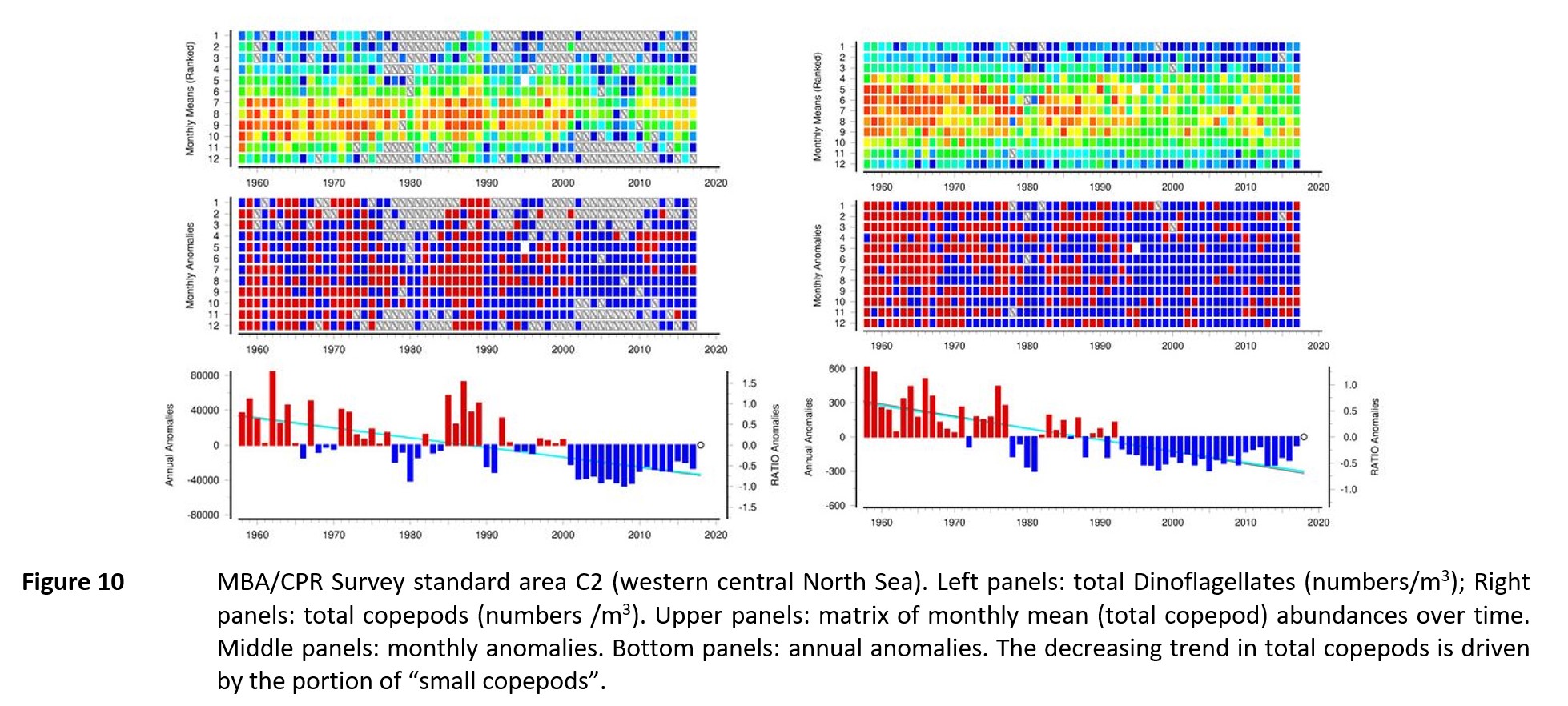Since the early 1980s, the annual mean North Sea sea-surface temperature (SST) has increased by more than 1 degree and has been above the long-term mean for 24 out of 30 years between 1990 and 2019 (Figure 9).
Coinciding with the observed abrupt changes in temperature conditions, both dinoflagellate and copepod abundances have exhibited pronounced alterations in both monthly and annual scales, with notably lower abundances observed generally since the late 1990s and the 1980s, respectively (Figure 10). For details on these changes and associated relations/implications, please see section on pelagic habitat and associated biota.
In addition to shifts in the size composition and distributions of zooplankton, shifts in zooplankton spring phenology are also occurring in response to higher temperatures. For example, the seasonal cycle of some species occurs four to five weeks earlier in the year. Such shifts in phenology may lead to the uncoupling of trophic interactions.
The deepening of the North Sea demersal fish assemblage by around 3.6 m per decade was observed in response to the 1.6°C temperature increase during 1980–2004, and the deepening was coherent for most assemblages. However, the latitudinal response to warming was heterogeneous and reflects: (i) a northward shift in the mean latitude of abundant and widespread thermal specialists, and (ii) the southward shift of relatively small, abundant southerly species with limited occupancy and a northern range boundary in the North Sea.


